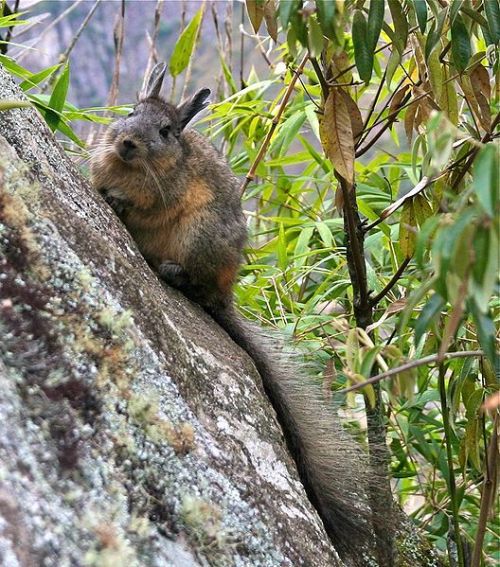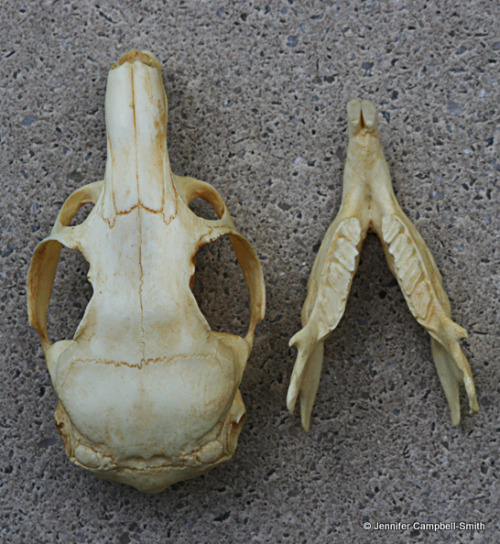I took some photos of a replica viscacha skull that is in a collection I manage for my university.&n
I took some photos of a replica viscacha skull that is in a collection I manage for my university. The replica was made by Skulls Unlimited and is listed as a female mountain/southern viscacha (Lagidium viscacia), but the scientific name given on the tag is for the northern viscacha (Lagidium peruanum). I’m not well enough versed in viscachas to tell you which one the skull is from. The cast is listed as being made from a specimen at the California Academy of Sciences, so there is a chance that the original specimen was the one mislabeled. How could this happen? Well, there is a chance that the northern and southern viscachas were originally classified as a single species and later separated. The tag for the specimen may not have been updated. I found a paper that only recognized 3 species as of 2004, whereas now there are 5 recognized species, so the scenario I gave is very likely!Anyhow, the northern and southern viscachas are rodents that are closely related to the well-known chinchilla. They superficially resemble a rabbit, or hare (which are lagomorphs, not rodents) with a long, bristly tail. They occur is western South America in parts of Chile, Peru, Argentina, and Bolivia. They are herbivorous and are found at elevations of a mere 980ft (300m) to an impressive 16,700ft (5,100m)! They are also rather adorable.The two photos of live viscachas were sources here and here. -- source link
#viscacha#vizcacha#lagidium viscacia#lagidium#lagidium peruanum#rodent#chinchilla#chinchillidae#animal skull#replica#skullsunlimited#rodentia#south america#argentina#bolivia








